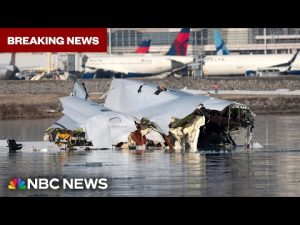
67 Presumed Dead in Collision of Regional Jet and Black Hawk Helicopter
A devastating mid-air collision between a regional jet and a Black Hawk helicopter has resulted in the presumed deaths of 67 people. The tragic accident has sent shockwaves through both the aviation and military communities, raising urgent questions about airspace safety, coordination protocols, and potential causes of the crash.
Incident Overview
On [insert date], a regional passenger jet carrying [insert number] civilians collided with a Black Hawk helicopter during routine flight operations near [insert location]. The impact caused both aircraft to plummet, with wreckage scattered over a wide area. Emergency response teams were quickly dispatched to the scene, but early reports indicate no known survivors among the 67 individuals aboard the two aircraft.
The collision occurred at approximately [insert time], with witnesses reporting a loud explosion in the sky followed by debris raining down. Some accounts suggest that the two aircraft were operating in the same airspace due to miscommunication or unforeseen circumstances.
Details About the Aircraft
The Regional Jet
The commercial jet involved in the crash was a [insert airline and model], a commonly used aircraft for short to medium-haul routes. These jets typically carry between 50 and 100 passengers and are designed for efficiency and safety. The flight was en route from [insert departure location] to [insert destination], with passengers and crew unaware of the impending disaster.
The Black Hawk Helicopter
The UH-60 Black Hawk is a military utility helicopter widely used for transport, medical evacuation, and combat support. The specific Black Hawk in this incident was engaged in a [training mission/operational flight] at the time of impact. It was carrying [insert number] personnel, all of whom are presumed dead following the collision.
Possible Causes and Investigation
Aviation authorities and military investigators have launched a full inquiry into the circumstances surrounding the crash. Several potential causes are being considered:
- Air Traffic Control Miscommunication – Errors in air traffic control instructions or a failure to properly coordinate flight paths between the civilian and military aircraft may have contributed to the crash.
- Mid-Air Visibility Issues – Weather conditions, lighting, or other visibility factors may have played a role in the aircraft failing to detect each other in time to take evasive action.
- Mechanical or Navigational Failure – Investigators are analyzing flight data and wreckage to determine whether technical failures or malfunctions affected the ability of either aircraft to maintain safe operations.
- Pilot Error – Human error is always considered in such investigations. Investigators are reviewing communication logs and flight records to assess whether any misjudgments were made.
- Unauthorized Airspace Entry – If either aircraft inadvertently entered restricted or uncoordinated airspace, the risk of collision would have increased significantly.
Rescue and Recovery Efforts
First responders, including emergency medical teams, military personnel, and aviation safety officials, arrived at the crash site within hours of the incident. Due to the extent of the destruction and fire from the collision, recovery efforts have been challenging. Search teams are focusing on retrieving black box recordings, identifying remains, and securing debris to aid in the investigation.
The wreckage is spread across a large area, complicating the search for crucial evidence. Authorities have urged civilians to avoid the crash site to prevent contamination of evidence and ensure safety.
Impact on Aviation and Safety Measures
The deadly collision raises significant concerns about airspace management, especially in regions where military and civilian aircraft operate in proximity. Authorities are now reviewing protocols to prevent similar incidents, including:
- Improved Airspace Coordination – Ensuring stricter guidelines for civilian and military aircraft sharing airspace.
- Enhanced Communication Systems – Implementing better real-time tracking and alert systems to prevent mid-air conflicts.
- Stronger Safety Regulations – Reviewing and enforcing stricter air traffic management procedures to minimize risks.
- Advanced Pilot Training – Enhancing pilot awareness and response drills for potential mid-air conflict scenarios.
Conclusion
The tragic loss of 67 lives in this horrific aviation disaster is a stark reminder of the risks associated with shared airspace. As investigations continue, authorities will work to uncover the precise cause of the accident and implement measures to prevent future occurrences. The aviation community mourns the loss and extends condolences to the families affected by this heartbreaking event. Ongoing inquiries will hopefully lead to strengthened safety standards and a better understanding of how such tragedies can be averted in the future.